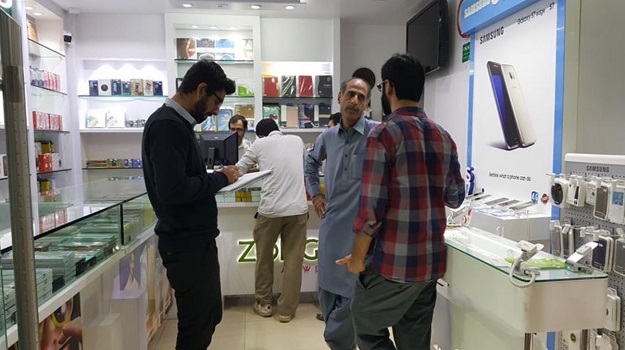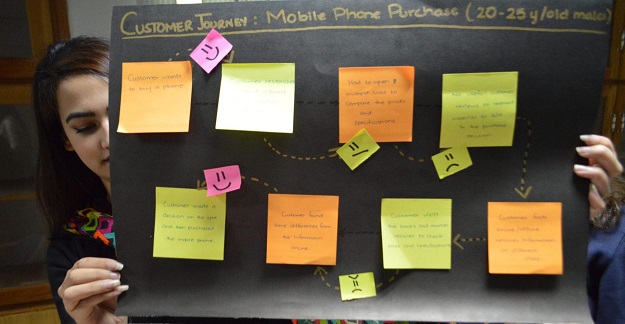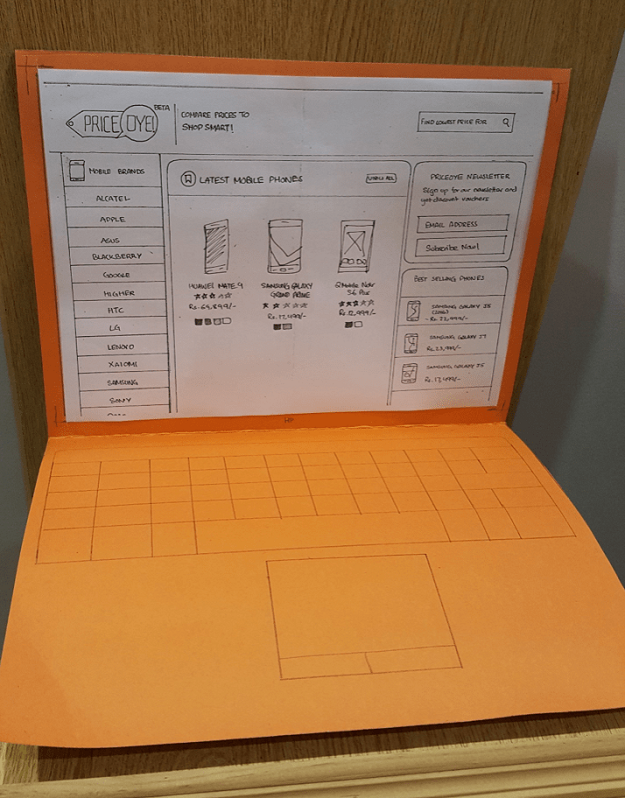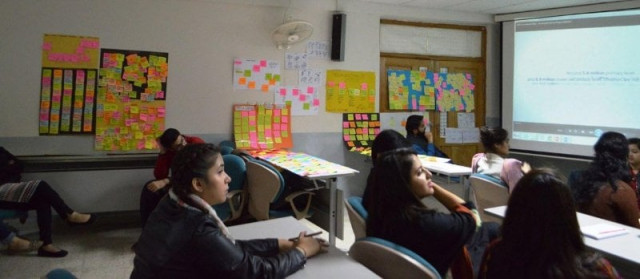How startups in Pakistan can work with schools to create a win-win situation
Collaboration between startups and academe can create tremendous opportunities for both parties
Collaboration between startups and academe can create tremendous opportunities for both parties. PHOTO: TECHINASIA/ANEEQAISHAQ
One big reason why western education systems are more successful than the ones in emerging economies like Pakistan is the exceptionally strong bond between industry and academia. Industry professionals and startup founders alike often work directly with universities to base their curricula on real market needs, enabling students to learn the right skills that land them to relevant jobs.
Correspondingly, advanced research projects in top universities such as MIT and Stanford routinely convert into commercially-viable products. In 2015 alone, University of California’s research launched 80+ startups, several of which went on to raise VC funding. This is the kind of incredible synergy that produces billion-dollar startups and invaluable talent to fuel the innovation economy.
Here in Pakistan, however, the industry-academia link remains weak. Based on my own observations as a recent graduate, startup founder, and academia collaborator, the industry’s interactions with academia are generally limited to grand events where they enjoy the limelight as ceremonial judges and chief guests. On the other hand, schools rarely engage with companies where their consultancy can have an impact.
Examples of startups emerging from academic research are difficult to find in Pakistan. CricFlex, a wearable device that detects illegal bowling action in cricket, is one of the few such startups that made it to the limelight in 2016. Most research work is shelved after students graduate or after professors move abroad to greener pastures. Academics that do go on to launch companies or work as executives in multinationals seldom return to campuses to bridge this gap.
This Pakistani startup just got into American seed accelerator Y Combinator
Thankfully, we are beginning to see positive signs. Both parties are realizing the larger impact that comes from working together. Some prominent universities have launched incubators to push for the production of their research (e.g LUMS Center for Entrepreneurship and NUST Technology Incubation Center, where industry leaders remain directly involved as mentors). These incubators also regularly play host to hackathons and startup weekends where the industry and academia find opportunities to work together. Several popular Pakistani startups like Savaree and Trequant have emerged from such events.
In this article, I share the story of a successful industry-academia collaboration in which my price comparison shopping startup, PriceOye, was directly involved.
Laying the seeds for industry-academia partnerships
The senior BBA students at NUST Business School (NBS) take the Product Design and Development elective every year. In fall of 2016, NBS teamed up with Aneeqa Ishaq, then manager in customer experience at Telenor Pakistan, to reorient and co-teach the course. The curriculum was adapted to give students a hands-on experience of user-centered product design through a semester-long Design Thinking project in collaboration with industry partners.
With a master’s degree from Stanford d.school and work experience as a designer at HP Labs and Lutron Electronics, Aneeqa is one of the few foreign-educated Pakistanis who come back to work and teach here. It is a rare example of reverse brain drain—movement of human resources from developed economies to fast-growing, developing ones—and I believe this is serving as a foundation for improved industry-academia partnerships in Pakistan.
The Institute of Design at Stanford (commonly known as the d.school) is one of the most prestigious design schools in the world. Besides many other accomplishments, it is famous for popularizing the Design Thinking methodology—a set of powerful human-centered design strategies that is now being used in companies like IBM, SAP, Apple, and Google, to name a few.
 PHOTO: TECHINASIA/AWAISIMRAN
PHOTO: TECHINASIA/AWAISIMRAN
Since returning to Pakistan, Aneeqa has exposed nearly 1,000 professionals and students to Design Thinking. By adding Design Thinking to the Product Design and Development curriculum and pairing up students with industry partners to solve real-world business problems using user-centered design, Aneeqa and NBS together have laid the foundation of continued industry-academia collaboration in Pakistan.
Design thinking for startups
In early fall, the Product Design and Development faculty invited companies and startups to submit design challenges. Selected briefs from TalkHealth, Mercurial Minds, Wowbox Telenor, and my startup were converted into semester projects, which the students worked on. They conducted empathic user research, and ideated, prototyped, and tested proposed solutions to business problems. The insights gained from this empathy fieldwork would help companies solve their problems better by identifying users’ needs and relevant business opportunities.
‘Pakistani parents more in favour of start-ups than other countries’
With a specific interest in mobile phones, my company’s design challenge was focused on unraveling the average Pakistani consumers’ shopping journey. As a growing startup, we needed to understand the complete journey—from the moment consumers think of getting a phone to the final step of purchasing it—to serve our users better.
 PHOTO: TECHINASIA/AWAISIMRAN
PHOTO: TECHINASIA/AWAISIMRAN
As part of the Empathize stage of Design Thinking, the students talked to over 100 people in our target demographic. Through this, we learned how and why urban, tech-savvy Pakistanis follow the ROPO (research online, purchase offline) trend that’s common in India. We learned how consumers rely heavily on the advice of friends and family to make a purchase decision. We also discovered why Pakistanis find websites and online stores unreliable, and how they use Facebook and Google to aggregate knowledge from several online resources instead. The common trends found through the interviews were used to define user profiles, which now help us in our company.
The students brainstormed a number of solutions to the opportunities discovered in the prior phase. We incorporated them into multiple prototypes that were then again tested with real users.
The complete process generated rich insights on consumer shopping behavior as well as on how our current product experience met, exceeded, or fell short of users’ expectations.
The key discovery for us came during an interview and related usability test of young, tech-savvy students: when researching online, consumers are as interested in actual prices as they are in warranty information and shipment details, an important point we missed out on when we started product development.
This Pakistani startup is helping increase worker incomes by 400%
The fact is a large chunk of phones sold online come through gray channels, so retailers often do not provide official brand warranty. Some stores even offer their own warranty which users do not trust as much. As a result of this inconsistency, consumers still need to visit each store to find out what kind of warranty they offer, which reduces our price comparison website’s usefulness. To make things easier, we now pull warranty and shipment information from stores, and display them in-line with our price lists on product pages.
A second interesting discovery was in how people used filters on brand pages to find phones that meet their specific requirements. Initially, we would only allow filters by hardware specifications. This was good enough for the small set of people who always buy from the same brand. However, since most phones sold are Android phones, and Android phone owners aren’t nearly as loyal as their Apple counterparts, users want to be able to filter phones by multiple brands. This proved our initial assumption wrong, so we updated filters on brand pages to allow selection of other brands.
All in all, students shared seven recommendations based on user research. We implemented two of them as soon as they informed us, while the others are now a part of our development road map.
 PHOTO: TECHINASIA/AWAISIMRAN
PHOTO: TECHINASIA/AWAISIMRAN
Academia partnerships a win-win-win
Before we started this project, we never imagined “naive” students would give us such powerful user insights. This collaboration has opened our collective eyes to the immense potential of industry-academia partnerships, especially for startups. Combining the “street smarts” of the industry who come from experience with the “book smarts” of the academia who come from deep research is a recipe for a larger impact neither party can create alone.
While any company can benefit from such partnerships, startups especially stand to benefit from working with academia. They can get fresh eyes on their “baby” products, while students can enhance their skills tremendously by solving real-world problems—a win-win-win situation for all stakeholders.
This article originally appeared on Tech in Asia.

 PHOTO: TECHINASIA/AWAISIMRAN
PHOTO: TECHINASIA/AWAISIMRAN PHOTO: TECHINASIA/AWAISIMRAN
PHOTO: TECHINASIA/AWAISIMRAN PHOTO: TECHINASIA/AWAISIMRAN
PHOTO: TECHINASIA/AWAISIMRAN
COMMENTS (2)
Comments are moderated and generally will be posted if they are on-topic and not abusive.
For more information, please see our Comments FAQ